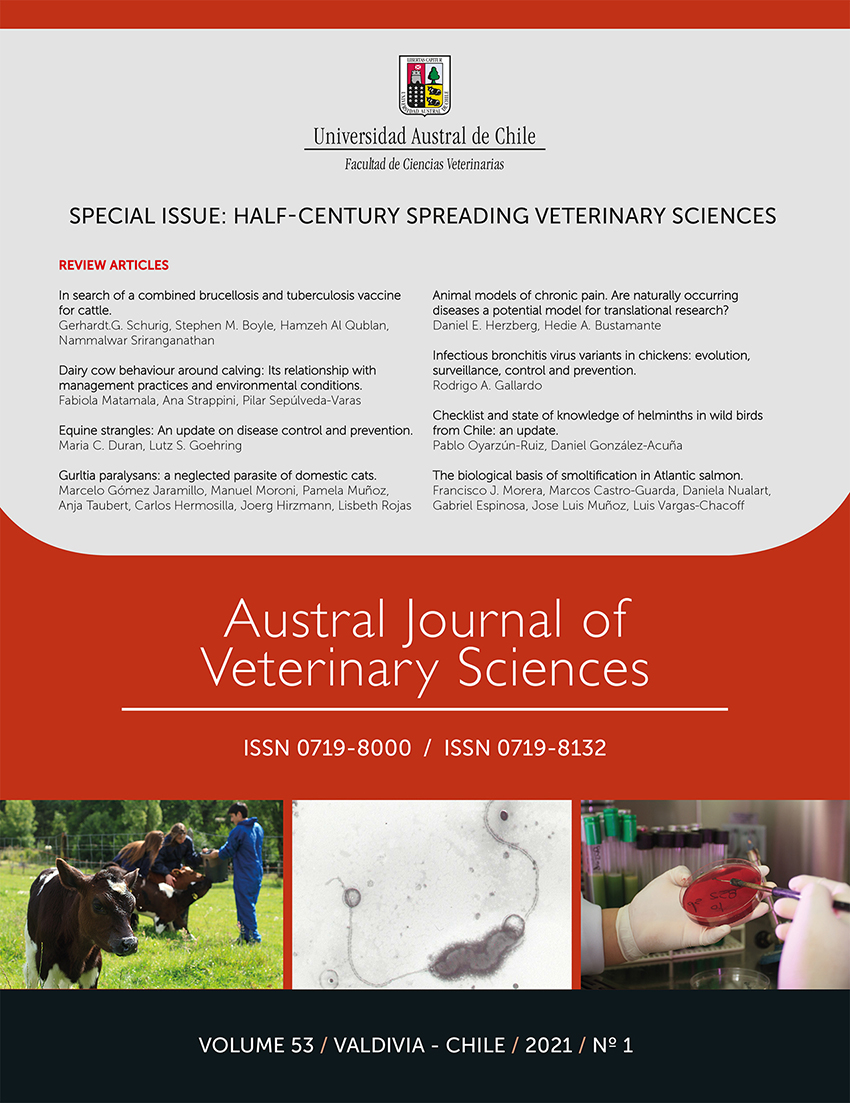Gurltia paralysans: a neglected parasite of domestic cats
Contenido principal del artículo
Resumen
Gurltia paralysans (order Strongylida; family Angiostrongylidae) is a metastrongyloid parasite that causes chronic meningomyelitis in domestic cats in South America. The geographic distribution of G. paralysans includes rural and periurban areas of Chile and Argentina. However, feline gurltiosis has recently been reported in other South American countries, including Uruguay, Colombia, and Brazil, and was also recently reported in Tenerife, Canary Islands (Spain). Feline gurltiosis is increasingly detected in domestic cats in southern Chile and its apparent geographic range is also increasing, together with an awareness of the disease among veterinarians. The life cycle of the parasite is unknown, but is probably indirect, involving gastropods as the intermediate host, as in other metastrongyloid nematode species. The clinical signs of G. paralysans infection include progressive pelvic limb ataxia, paraparesis, paraplegia, faecal or urinary incontinence, and/or tail paralysis. A definitive diagnosis of feline gurltiosis is still challenging and only possible with necropsy, when adult G. paralysans nematodes are detected within the spinal cord vasculature, together with macroscopic lesions, and characteristic morphological features. A seminested PCR method was recently developed for the in vivo diagnosis of this neglected parasite. Current treatment options include macrocyclic lactones and mylbemicn oxime, but the prognosis is poor in severe cases. In this article, we review G. paralysans infection in cats, focusing on the diagnosis shortcomings and the future directions of research into its biology and the associated neurological disease. Comprehensive updates on the epidemiology and clinical features, diagnosis, treatment, and prevention of feline gurltiosis are provided.

